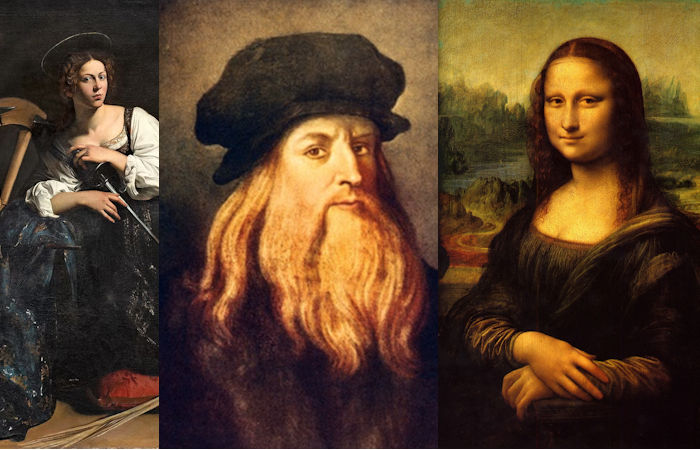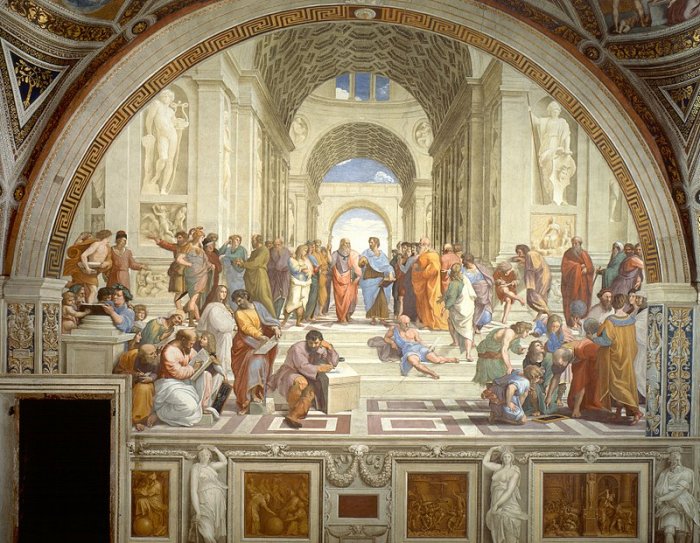Leonardo Da Vinci’s Mother Might Have Been A Slave – Here’s What The Discovery Reveals About Renaissance Europe
AncientPages.com - A recently discovered note, drawn up by Leonardo da Vinci's father, Piero, in November 1452, shows that he emancipated an enslaved woman named Caterina.
The scholar who found the document (Carlo Vecce, a professor of Italian literature) has suggested that she was Leonardo's mother.
Left: St Catherine of Alexandria as painted by Caravaggio (1598). Museo Nacional Thyssen-Bornemisza, CC BY - Middle: Self-portrait of Leaonardo da Vinci. Credit: Public Domain - Right: Mona Lisa. Credit: Public Domain
The claim was announced to coincide with the publication of Vecce's novel "Il Sorriso di Caterina" (Caterina's Smile)—a fictional account of the life of da Vinci's mother. Vecce's novel weaves together the few facts scholars agree on: that da Vinci was the illegitimate child of his father and a lower status woman and that his mother was called Caterina.
Scholars agree on these facts because of another archival discovery made by leading Leonardo da Vinci scholar Martin Kemp in 2016.
Kemp identified a 1457 tax return filed by Leonardo's grandfather, Antonio da Vinci, who listed his family members, including Piero da Vinci's illegitimate son, "born of him and Caterina." That document led Kemp to identify da Vinci's mother as 15-year-old orphan, Caterina di Meo Lippi.
These two archival finds—Piero da Vinci's emancipation of Caterina, and Antonio da Vinci's tax return—mean that Vecce and Kemp agree on da Vinci's mother's social background. This is an important part of his life story.
Had da Vinci been a legitimate son, his professional career would have followed that of his father, who was a notary (a legal professional who authenticates and witnesses legal documents).
Da Vinci was recognized as his father's son and lived with his grandfather, but as an illegitimate child, his professional career and training had to lie elsewhere. Instead of pursuing a legal career, da Vinci was apprenticed to Andrea del Verrochio, a goldsmith and painter. The rest, as they say, is history.
Slavery in Renaissance Europe
Slavery was an intrinsic part of the social structure of Renaissance Europe and was well documented in legal records. Much recent scholarship has focused on gaining a better understanding of what being "enslaved" meant and who these slaves may have been.
The newly discovered document demonstrates how common enslavement was in Renaissance Europe and how far down the social scale it reached. Piero da Vinci—who was reasonably well off but by no means top of the social order—both owned an enslaved woman (Caterina) and could afford to emancipate her.
The School of Athens by Rafael. Credit; Public Domain
Piero followed contemporary social conventions in adding a Circassian slave to his household. Circassian slaves came from the northwest Caucasus and the women were celebrated for their beauty.
Many Circassians were Muslim and the name "Caterina" was commonly assigned on conversion to Christianity. Caterina refers to St Catherine of Alexandria, a Roman convert who became a martyr, so the name both referenced this act of conversion and an example of devoted service for the newly converted's emulation.
Emancipation of slaves was a social expectation of Christian charity and often occurred when the owner drew up their will, or when a slave had "proven" their service. This could relate to their length of service or—likely in Caterina's case—the birth of a son. These people often disappeared from the records after their emancipation.
In Caterina's case, Kemp suggests she was provided with a small dowry to enable a modest marriage. It is certainly possible that Caterina's emancipation followed the birth of her son, Leonardo, but the archives give us no more answers. There is likely no way of telling what Caterina's fate was and Vecce's fictional account is as good a reconstruction as any.
The possible birthplace and childhood home of Leonardo in Anchiano, Vinci, Italy. Roland Arhelger, CC BY
Vecce's document also raises questions about what is meant by the word "slavery" within the context of Renaissance Europe. Slavery, in the most generic sense of the word, means the ownership of a person by someone else, including ownership over their body and labor.
An enslaved person like Caterina was considered very valuable in Renaissance Europe. Adding a slave to his household staff acted as a status marker for Piero da Vinci. His ownership of a Circassian slave showed that he had economically and professionally made it.
Furthermore, Piero's subsequent emancipation of his slave allowed him to demonstrate his supposed Christian compassion in freeing her, and again demonstrated his economic affluence in being able to lose her (free) labor.
A Renaissance slave was the "most unfree" of a Renaissance household's servants, but ultimately, every one of Piero da Vinci's servants was bonded and unfree in one way or another.
Enslaved people in Renaissance Europe were not considered a distinct group but belonged within the wider social context of serfdom and servitude. What set them apart was their fixed market value and that they could, by law, be sold and (re)sold unless emancipated—which led them to be seen as luxury possessions.
So, does Vecce's document change our understanding of da Vinci's life and work? Not in the slightest. What it does do, however, is shed light on just how far enslavement reached into the households of Renaissance Europe.
Written by Gabriele Neher, Associate Professor in History of Art, University of Nottingham
Provided by The Conversation
This article is republished from The Conversation under a Creative Commons license. Read the original article.
More From Ancient Pages
-
 Rio Tinto Bosses Quit Over Destruction Of One Of The Earliest Aboriginal Sites
News | Sep 12, 2020
Rio Tinto Bosses Quit Over Destruction Of One Of The Earliest Aboriginal Sites
News | Sep 12, 2020 -
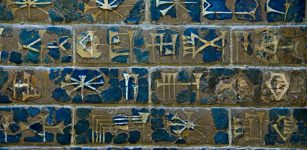 Ishtar Gate, The Eighth Gate Of The Inner City Of Babylon
Civilizations | Sep 6, 2015
Ishtar Gate, The Eighth Gate Of The Inner City Of Babylon
Civilizations | Sep 6, 2015 -
 Seven Times People Discovered The Americas And How They Got There
Featured Stories | Sep 9, 2022
Seven Times People Discovered The Americas And How They Got There
Featured Stories | Sep 9, 2022 -
 Human Ancestors Preferred Mosaic Landscapes And High Ecosystem Diversity – New Study
Evolution | May 13, 2023
Human Ancestors Preferred Mosaic Landscapes And High Ecosystem Diversity – New Study
Evolution | May 13, 2023 -
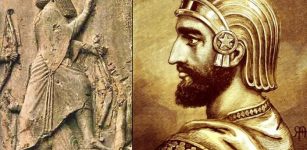 Murder Of Bardiya: Son Of Cyrus The Great And The Riddle Of The Impostor
Historical Figures | Dec 7, 2018
Murder Of Bardiya: Son Of Cyrus The Great And The Riddle Of The Impostor
Historical Figures | Dec 7, 2018 -
 Long-Lost Home Of Harold, The Last Anglo-Saxon King Of England Found On Depicted On The Bayeux Tapestry
Archaeology | Jan 28, 2025
Long-Lost Home Of Harold, The Last Anglo-Saxon King Of England Found On Depicted On The Bayeux Tapestry
Archaeology | Jan 28, 2025 -
 Hidden Ancient Message About Humans’ Future Found Inside San Miniato Al Monte Basilica?
Ancient Mysteries | Oct 16, 2025
Hidden Ancient Message About Humans’ Future Found Inside San Miniato Al Monte Basilica?
Ancient Mysteries | Oct 16, 2025 -
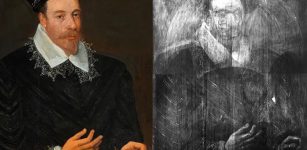 X-Ray Reveal Ghostly Portrait Of Mary Queen Of Scots Hidden Underneath 16th Century Painting
Archaeology | Nov 3, 2017
X-Ray Reveal Ghostly Portrait Of Mary Queen Of Scots Hidden Underneath 16th Century Painting
Archaeology | Nov 3, 2017 -
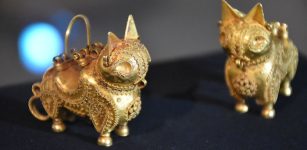 Beautiful Gold ‘Lynx’ Earrings Discovered In The Ruins Of The Ancient Lost City Of Ani Go On Display In 2023
Archaeology | Dec 29, 2022
Beautiful Gold ‘Lynx’ Earrings Discovered In The Ruins Of The Ancient Lost City Of Ani Go On Display In 2023
Archaeology | Dec 29, 2022 -
 Ancient Papyrus Of Merer Reveals How The Great Pyramid Of Giza Was Built
Archaeology | Sep 27, 2017
Ancient Papyrus Of Merer Reveals How The Great Pyramid Of Giza Was Built
Archaeology | Sep 27, 2017 -
 Ancient Egyptian Guide To Rostau – The Underworld Of God Osiris May Be World’s Oldest Illustrated Book
Archaeology | Jan 2, 2020
Ancient Egyptian Guide To Rostau – The Underworld Of God Osiris May Be World’s Oldest Illustrated Book
Archaeology | Jan 2, 2020 -
 Evidence Of Unknown Ice Age Civilization Discovered In Michigan Ignored By Pipeline Company!
Archaeology | Oct 16, 2020
Evidence Of Unknown Ice Age Civilization Discovered In Michigan Ignored By Pipeline Company!
Archaeology | Oct 16, 2020 -
 Viking Ragnar Lodbrok Wanted To Kill His Son Ivar The Boneless
Featured Stories | Jun 19, 2017
Viking Ragnar Lodbrok Wanted To Kill His Son Ivar The Boneless
Featured Stories | Jun 19, 2017 -
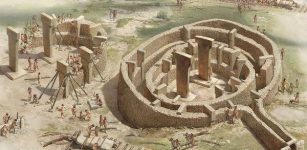 Mysterious Skull Cult At Göbekli Tepe – Ancestor Worship Or Trophies Of Dead Enemies?
Archaeology | Jul 25, 2017
Mysterious Skull Cult At Göbekli Tepe – Ancestor Worship Or Trophies Of Dead Enemies?
Archaeology | Jul 25, 2017 -
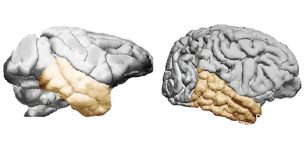 Suprising Evolution Discovery – Human Temporal Lobes Are Not Very Large In Comparison With Other Primates
Archaeology | Mar 21, 2023
Suprising Evolution Discovery – Human Temporal Lobes Are Not Very Large In Comparison With Other Primates
Archaeology | Mar 21, 2023 -
 Scientists Attempt To Solve An Ancient Greek Volcano Mystery
Archaeology | Sep 20, 2022
Scientists Attempt To Solve An Ancient Greek Volcano Mystery
Archaeology | Sep 20, 2022 -
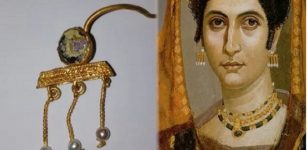 Gold Earring Found In Ruins Of Ancient Roman Colony Deultum In Bulgaria
Archaeology | Oct 11, 2020
Gold Earring Found In Ruins Of Ancient Roman Colony Deultum In Bulgaria
Archaeology | Oct 11, 2020 -
 Mystery Of Arthur’s Stone In UK – Solved?
Archaeology | Aug 11, 2021
Mystery Of Arthur’s Stone In UK – Solved?
Archaeology | Aug 11, 2021 -
 Sweden’s Blue Maiden ‘Blåkulla’ Island – Mythical Place With Dark Secrets Of Witches And Wizardry
Places | Sep 23, 2015
Sweden’s Blue Maiden ‘Blåkulla’ Island – Mythical Place With Dark Secrets Of Witches And Wizardry
Places | Sep 23, 2015 -
 Ancient Tell-Tayinat Inhabitants And Climate Change Resilience – New Study
Archaeology | Oct 30, 2020
Ancient Tell-Tayinat Inhabitants And Climate Change Resilience – New Study
Archaeology | Oct 30, 2020

